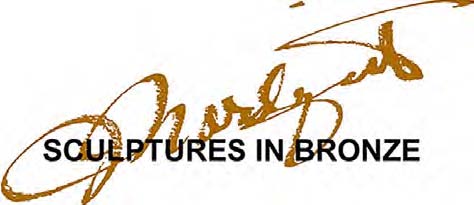
Judy and Kim Nordquist, Creating a Life-size Bronze Sculpture
To create a Life-size sculpture, the 1/5 Life-size scale model is sculpted in oil based clay from photos and measurements of the individual horse. 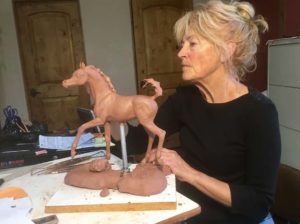
The clay model is then molded and cast in bronze with ancient art of lost-wax casting—the oldest example of this technique is over 6,000 years old. Judy and Kim share the process with you below.
Original Scale Model Sculpture – three months
The scale model is finished and cast in bronze!
Foam enlargement process –4 weeks
The scale model is scanned with a laser and enlarged with a CAD program. The Life-size is milled in sections of blue foam. The blue foam sections are glued together in preparation for the artist to add the clay.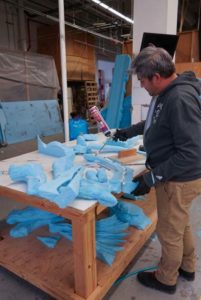
Clay is carefully sculpted on to the foam model and the pieces are placed together and secured.
Sculpting Life-Size clay — 4-5 months
It takes days of carving into the foam to redefine the detail of the foam model. Then months of adding the clay to the foam model to sculpt the details of the muscles, tendons, and facial features.
Final Life-Size Clay Sculpture Ready for transfer and molding at the foundry.
Mold making — 8 weeks
This step is the most important part in making sure the bronzes are true to our original sculpture. Rubber is painted on the clay sculpture and then coated with plaster of Paris for support. The finished Life-size clay sculpture is cut into 40 different sections for molding. This creates the “Mother mold”.
Foundry processtocastbronze – 12- 14weeks
Wax Casting – Wax is poured into the Mother Molds, cooled and set. The wax is gently removed from the mold and chased by artisans to remove any imperfections. Judy inspects the waxes for seam lines and bubbles. Next: Spruing and Gating – Wax rods are attached to the wax with a large cup at one end. This cup will receive the molten bronze.
Ceramic Shell – The wax is dipped into a ceramic slurry of very fine silica sand. The slurry coats the inside and outside which allows the sculpture to be hollow.
The dry ceramic shell is placed in kiln and heated to 2,000 degrees to melt out the wax.
Metal Casting
A gas fired crucible heats the bronze to 2000 degrees and then the molten bronze is poured into the hollow shell. When the bronze is cooled, the shell is broken away.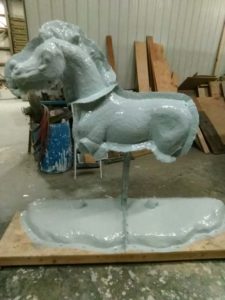
The metal is then carefully grinded to remove the weld lines of the bronze to recreate the texture of the original clay sculpture
Bronze Patina — 1 week
The bronze is sand blasted to prepare the surface for
the patina. Specific chemicals are used to obtain the variation in coloring on the finished bronze. The chemicals are sprayed on at the same time the bronze is heated with a propane torch to heat the metal to the proper temperature. Then a final coat of Incralac is sprayed on to protect the bronze.
Chemicals are added to the bronze to create the depth and richness in the final color.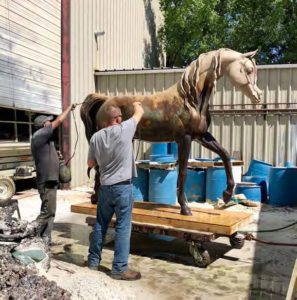
Heat is applied to bring out the final rich tones.
The life-size Sculpture finished and loaded on the trailer on its way to its new home!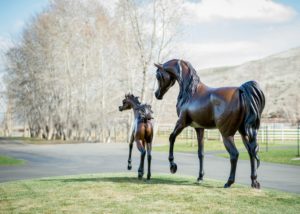
Nordquist www.judynordquist.com



